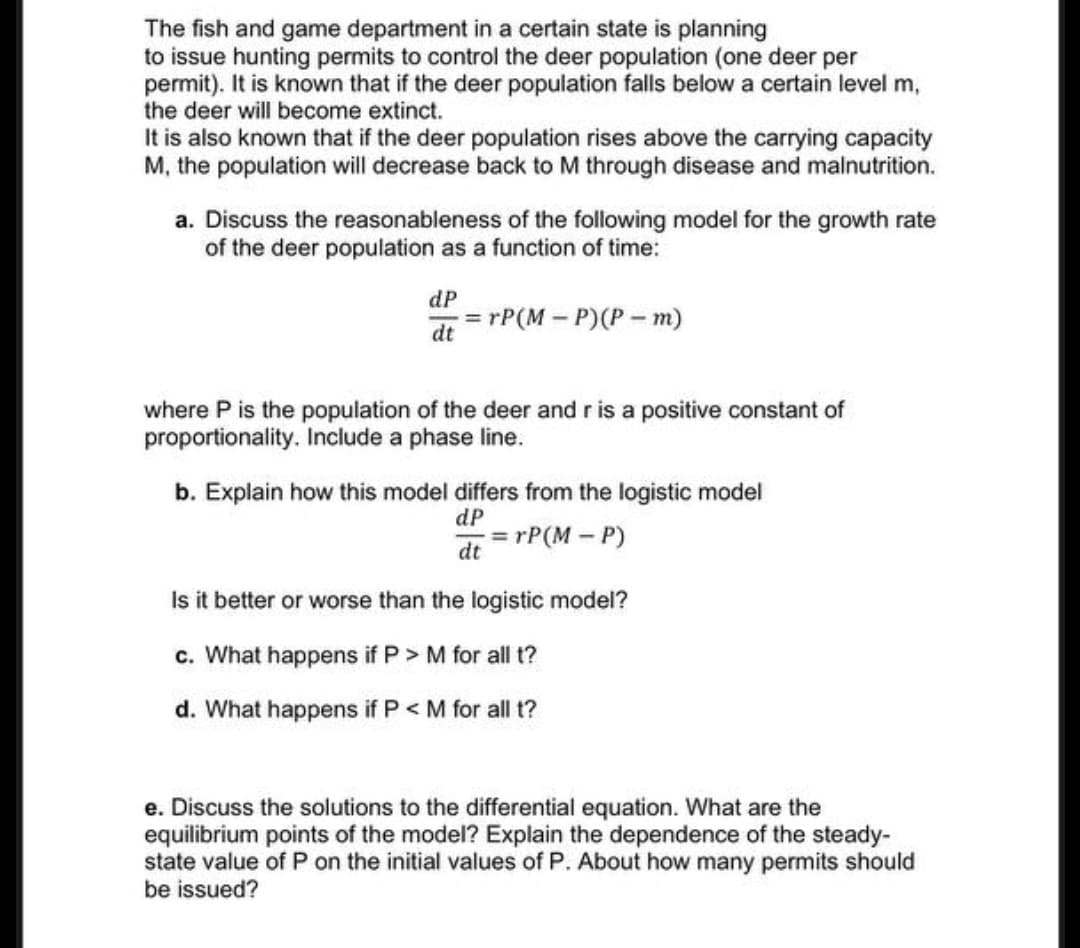olve parts c
Linear Algebra: A Modern Introduction
4th Edition
ISBN:9781285463247
Author:David Poole
Publisher:David Poole
Chapter7: Distance And Approximation
Section7.3: Least Squares Approximation
Problem 33EQ
Related questions
Question
please solve parts c and d

Transcribed Image Text:The fish and game department in a certain state is planning
to issue hunting permits to control the deer population (one deer per
permit). It is known that if the deer population falls below a certain level m,
the deer will become extinct.
It is also known that if the deer population rises above the carrying capacity
M, the population will decrease back to M through disease and malnutrition.
a. Discuss the reasonableness of the following model for the growth rate
of the deer population as a function of time:
dP
=
=rP(M-P)(Pm)
dt
where P is the population of the deer and r is a positive constant of
proportionality. Include a phase line.
b. Explain how this model differs from the logistic model
dP
=rP(M-P)
dt
Is it better or worse than the logistic model?
c. What happens if P > M for all t?
d. What happens if P < M for all t?
e. Discuss the solutions to the differential equation. What are the
equilibrium points of the model? Explain the dependence of the steady-
state value of P on the initial values of P. About how many permits should
be issued?
Expert Solution
This question has been solved!
Explore an expertly crafted, step-by-step solution for a thorough understanding of key concepts.
Step by step
Solved in 3 steps with 1 images

Recommended textbooks for you

Linear Algebra: A Modern Introduction
Algebra
ISBN:
9781285463247
Author:
David Poole
Publisher:
Cengage Learning


Algebra & Trigonometry with Analytic Geometry
Algebra
ISBN:
9781133382119
Author:
Swokowski
Publisher:
Cengage

Linear Algebra: A Modern Introduction
Algebra
ISBN:
9781285463247
Author:
David Poole
Publisher:
Cengage Learning


Algebra & Trigonometry with Analytic Geometry
Algebra
ISBN:
9781133382119
Author:
Swokowski
Publisher:
Cengage

Trigonometry (MindTap Course List)
Trigonometry
ISBN:
9781337278461
Author:
Ron Larson
Publisher:
Cengage Learning
